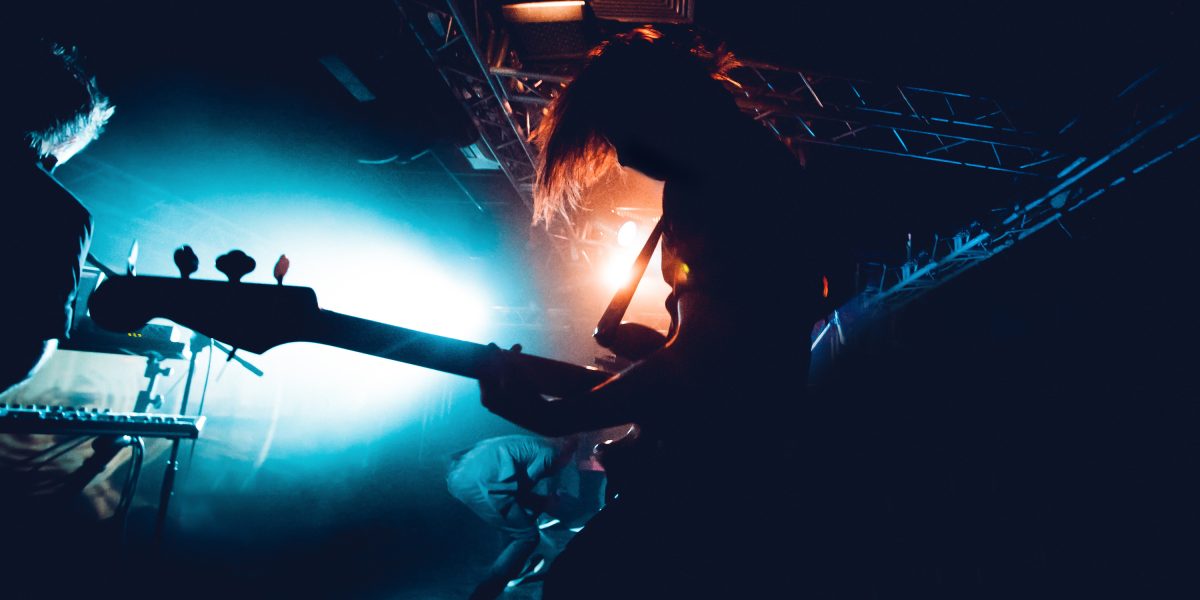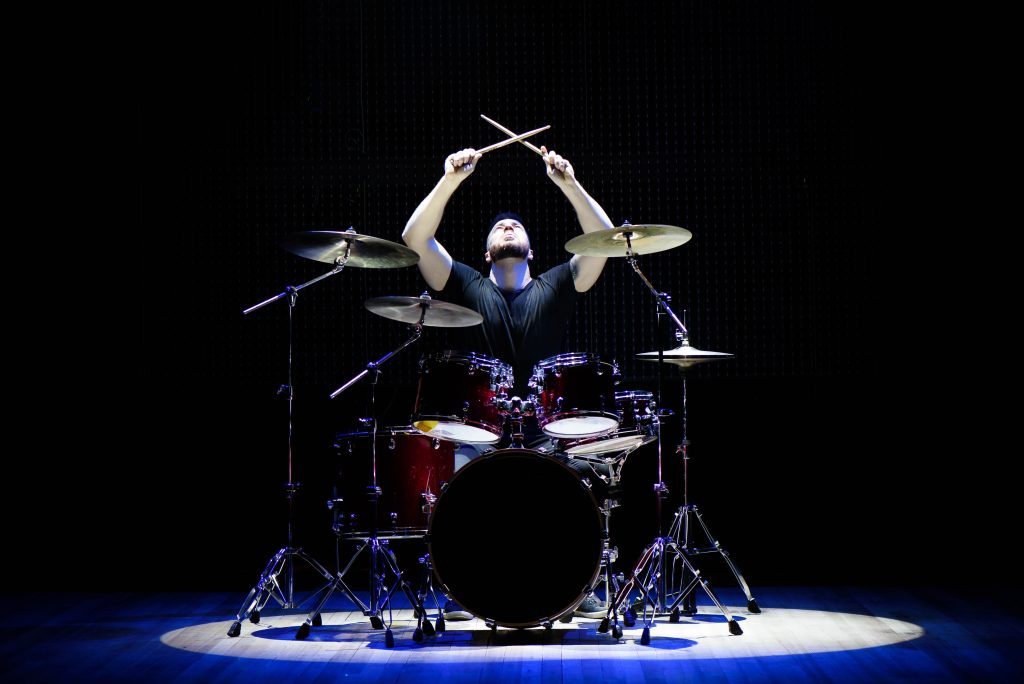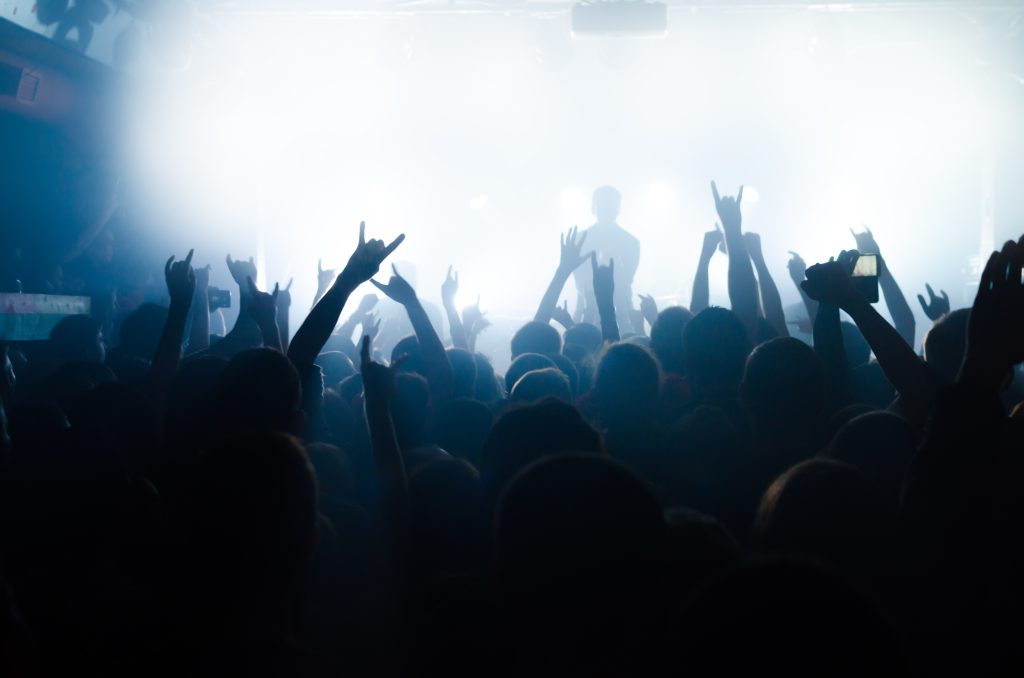
in this article
- Trance-Inducing Polyrhythms
- Track Titles and Lyrics
- Cover Artwork
- Live Shows
Are you 18 or older?
Please confirm that your are 18 years of age or older.
You are not allowed to access the page.

Disclaimer: The views and opinions expressed in this article are those of the authors and do not necessarily reflect the official policy or position of the Chemical Collective or any associated parties.
I want to make a case for why Meshuggah should rightly be considered a psychedelic band – and this goes beyond the music itself; it extends to their album cover artwork and live shows as well. Their psychedelic nature as a band makes them unique in the world of metal, as there aren’t too many metal bands that are considered ‘psychedelic’. Tool – if you want to call their music metal (not all fans do, and neither does their drummer Danny Carey) – is the most prominent and well-known ‘psychedelic metal’ band. And other metal bands (particularly those of the progressive variety like Tool) certainly have psychedelic elements. But Meshuggah’s style makes them stand out. Listening to them is a distinct (and sometimes mind-altering) experience.
(While the members of Meshuggah have not been very open in interviews about their personal use of psychedelics, you can get a sneak peek into this through an old behind-the-scenes tour video, as frontman Jens Kidman clearly seems to be tripping in one clip.)

The first way in which Meshuggah’s music can be said to be psychedelic is through its hypnotic, trance-inducing style – achieved through polyrhythms and syncopation. The band – most obvious through Tomas Haake’s drumming – uses the kind of polyrhythms that you might find in West African djembe drumming, although they’ve experimented with polyrhythms in fascinating and novel ways.
Rhythmic, repetitive drumming – the kind used in shamanic or African drumming – can induce altered states of consciousness. It is one of the (many) techniques that humans have discovered and developed for achieving trance or ecstatic states. These states aren’t likely to be of the sort achievable through psychedelics, but they can nonetheless involve a distinct shift in consciousness, leading to physical and mental euphoria, a sense of group unity (especially in the case of group drumming), loss of self-focus, losing or altering one’s sense of time, and increases in energy and alertness.
One theory is that complex, rhythmic drumming, intended to induce altered states, developed in Africa because the continent lacked naturally occurring psychedelics. (While natural psychedelics are not widespread in the content, and not widely used, there does exist a tradition of iboga use in Central West Africa and more research is being carried out on the use of psilocybin mushrooms by indigenous groups in southern Africa.) Whatever the merits of this theory may be, it is clear that repetitive, rhythmic music has the potential to alter consciousness (somewhat) – and Meshuggah’s music can achieve this effect too. The band relies heavily on repetitive, complex polyrhythms. That’s what they’ve refined – and turned into an art – over the years. Starting out more in the thrash metal genre, they experimented with rhythms that would eventually become associated with the ‘djent’ genre (which you can hear on their 1994 EP, None).
Uwe Maas – a classical and folk violinist, who was initiated into the Bwiti spiritual tradition that uses iboga – wrote a chapter for the book Music and Altered States (2009) titled ‘Polyrhythms Supporting a Pharmacotherapy: Music in the Iboga Initiation Ceremony in Gabon’. Polyrhythms, through their generation of altered states, can have therapeutic effects. (Other contributors for Music and Altered States describe how polyrhythmic music can alter the mind, as well as the benefits of doing so.)
Meshuggah’s particular style of polyrhythmic music is obviously unlike the indigenous varieties of this type of music – the instrumentals are heavy and dark, and Kidman’s vocals are harsh and guttural. But this doesn’t mean the music can’t be joy-inducing. Indeed, despite Jens Kidman’s aggressive screams and shouts, and the often chaotic sound of the music, many psychedelic users find Meshuggah very listenable while tripping. In an already altered state, Meshuggah’s music can be highly trance-inducing. (Kidman’s vocals seem to be psychedelic-friendly because they’re rhythmic and so blend perfectly with the instrumentals.)
The psychedelic influence on Meshuggah as a band is clear based on track titles alone. The 2001 compilation album Rare Trax has the track ‘The Ayahuasca Experience’; the 2002 album Nothing features the track ‘Closed Eye Visuals’; the 2008 album obZen has a track titled ‘Pineal Gland Optics’ (the pineal gland is often associated with DMT in psychedelic lore); and their latest album, Immutable, which came out in 2022, features the track ‘Kaleidoscope’.
Additionally, while not one of Meshuggah’s albums, the ‘evil jazz metal’ album Sol Niger Within by Frederik Thordendal’s Special Defects (Thordendal being one of the guitarists of Meshuggah) has the psychedelic-themed track title ‘Vitamin K Experience (A Homage to The Scientist/John Lilly)’, as well as mystical-themed tracks like ‘In Reality All Is Void’ and ‘Tathagata’ (this being a word that refers to the Buddha or an enlightened being).

Many of Meshuggah’s lyrics are also very psychedelic in nature. Some examples include this line from the end of ‘Closed Eye Visuals’: “I’m forever devoured by the closed eye visual delusion, A twirling visual overload, Explosions of terror and beauty, Colors of fear and pain within clash into unanything”. This sounds to me like a psychedelic trip characterised by the sublime: a mixture of fear and wonder. (Meshuggah definitely veers into more dark psychedelic territory – the vibe of a hellish trip more than one full of love and light.) A repeating theme in Meshuggah’s music is that of paradox and contradiction (we see this in track titles like ‘The Paradoxical Spiral’, from the 2005 album Catch Thirtythree, and in the lyrics from tracks like ‘Dehumanization’, also from Catch Thirtythree: “Nothing is all. All is contradiction”, “A stagnant flow of endings”, “Merging to form the multi-none”, and “Greeting the chasm – unbearable, sublime”.
This can be viewed as psychedelic and mystical in nature because a common aspect of psychedelic mystical experiences is paradoxicality (e.g. the feeling of being nothing and everything at the same time). This paradoxicality is often related to the ineffability of these experiences; contradictory descriptions are used – as mystics often use them – to represent types of experience that cannot be accurately communicated to others.
Meshuggah’s lyrics seem to capture other aspects of altered states as well. For instance, at the end of the track ‘Inside What’s Within Behind’, from the 1995 album Destroy Erase Improve, the lyrics remind me of the introspection, self-reflection, and alterations to sense of self that can occur while on psychedelics: “Turn your eyes toward the inside, Dig deep within – I’m sure you’ll find, A different self, a different soul, To put you in peace with mind”.
The artwork used for some of Meshuggah’s albums is also psychedelic. For their 1995 EP Selfcaged, the visionary artist Alex Grey created the album cover art, which features the centrepiece of his 1987 painting Deities and Demons Drinking from the Milky Pool. The album cover for Nothing is kaleidoscopic (in the ‘bad trip’ sense, as is characteristic of Meshuggah). And the psychedelic digital artist Luminokaya created the cover artwork for the albums Koloss (2012), The Violent Sleep of Reason (2016), and Immutable. (Some Meshuggah fans aren’t fans of Luminokaya’s particular style of psychedelic art, whereas others feel it matches the band’s vibe.)

The final way in which Meshuggah can be considered a psychedelic band is through the live shows they put on. Meshuggah’s light tech, Edvard Hansson, creates an impressive psychedelic light show at Meshuggah gigs (which has even been academically studied). The lights are skillfully timed to the band’s polyrhythms (they’re manually controlled by Hansson, not computer-programmed). On stage, Meshuggah also have their trippy album artwork on display. And the band members themselves have an imposing stage presence. Sonically and visually, Meshuggah creates a unique live show experience, one where you get hypnotically lost in the intense audio/visual experience. Some fans have also been brave enough to trip at Meshuggah gigs, further intensifying the experience.
The comedian Bill Burr has talked glowingly of how powerful a Meshuggah show is. He described seeing them live as a “life-altering experience”. He said:
It was just these fucking strobe lights going at you, lined up with the bass drum. So everybody’s fucking nodding to the beat like [mimics bass drum] and the lights are like [mimics song groove] in your fucking face.
I never thought I’d be into some shit like that. I can’t say enough how fucking unbelievable that band is. And you’re doing yourself a disservice as a human being if you never see them live. It was fucking unbelievable.
Some even compared the mind-altering experience of seeing Meshuggah live to what it’s like to see bands that are seen as typically more ‘psychedelic’. Robert Lovering – a philosopher and the author of On the Moral Right to Get High and A Moral Defense of Recreational Drug Use – recently contributed a chapter to the book The Palgrave Handbook of Philosophy and Psychoactive Drug Use. The end of his author’s bio states, “He lives in New York City where he never misses the opportunity to alter his mind at a Phish or Meshuggah show.”
When I saw Meshuggah live in London at 02 Kentish Town Forum in 2017, the light show became particularly psychedelic during the last track they played, ‘Future Breed Machine’. Thordendal’s guitar effects during the breakdown were also a lot trippier than the studio version, creating the atmosphere of an alien visitation (here’s some footage of that section, from the same tour).
I also remember the first time I saw Meshuggah live, at the same venue in 2012 (back then it was called HMV Forum), and while the lights show and guitar effects weren’t as trippy then as they are now, I still remember feeling lost in the music. I was completely locked into the experience, similar to when you watch a film and get so absorbed in it that you lose awareness of the outside world. This is an example of the mind-altering effect that Meshuggah’s music, and their live shows, can have – and it’s often why fans prize and praise their music so highly.
Sam Woolfe | Community Blogger at Chemical Collective | www.samwoolfe.com
Sam is one of our community bloggers here at Chemical Collective. If you’re interested in joining our blogging team and getting paid to write about subjects you’re passionate about, please reach out to David via email at blog@chemical-collective.com

Welcome to Chemical Collective.
Create an account to earn 200 welcome points.
Already have an account? Sign in


Check out our Community Blog and get involved with the conversation. You will be awarded 50 x ChemCoins for each comment up to a limit of 250 total ChemCoins.


Have you purchased any of our products? Reviews and reports are so important to the community. Share your honest opinion, and we’ll reward you with 50 ChemCoins for each review!


Every time you complete an order with us, you’ll be awarded ChemCoins for each Euro spent.
Welcome to Chemical Collective.
Create an account to earn 200 welcome points.
Already have an account? Sign in

Earn commission every time someone makes a purchase through your link.
When you become an affiliate, you will be allocated a unique link to share with your friends, followers, subscribers, or Aunt Susan.
You can choose to payout the commission earned once per month, or save it up to receive on a rainy day! Commission earned is 5% of the total order value per referral.
Contact us to join the Chemical Collective family and become an affiliate.
share your toughts
Join the Conversation.
Bleed is fractal in nature, like much of their early works…absolutely insane stuff